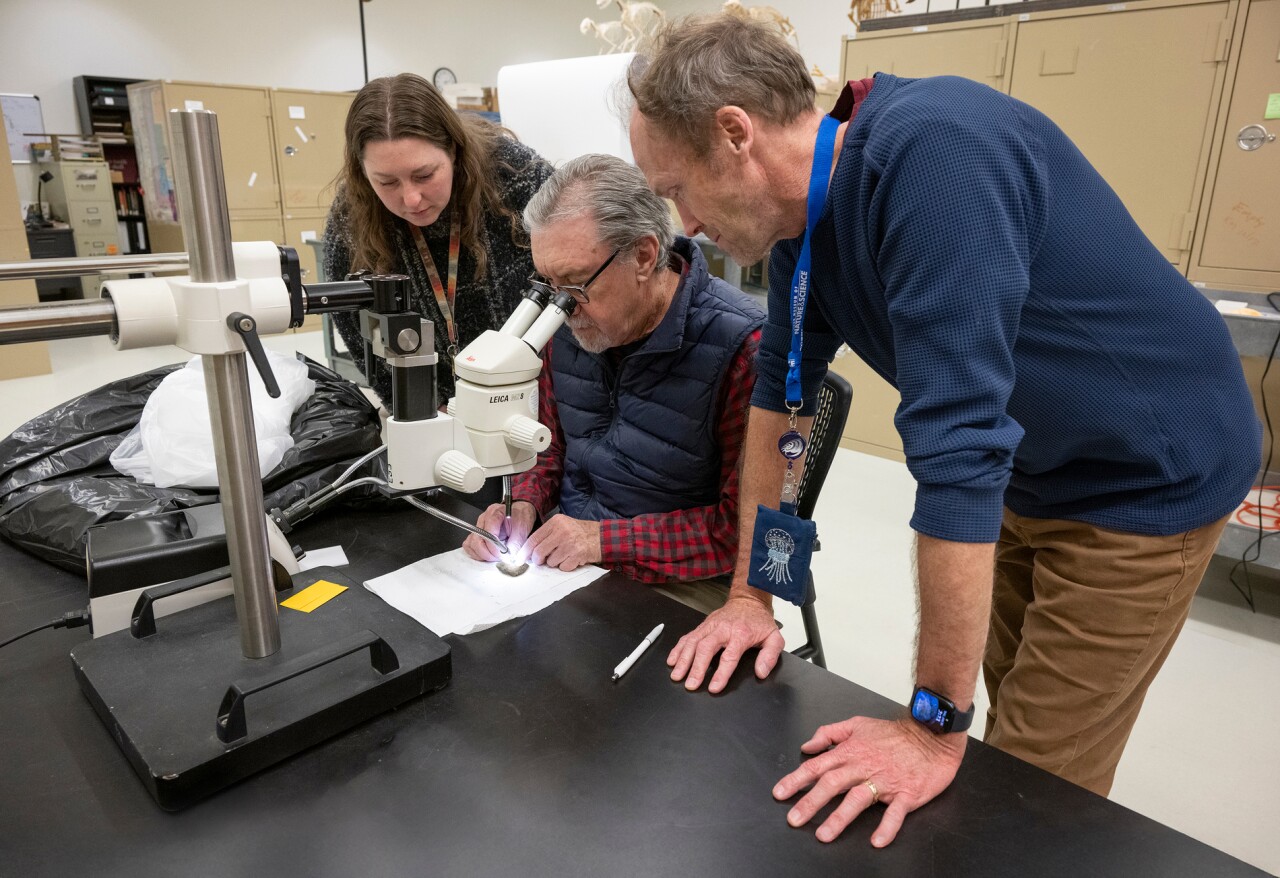DENVER — Scientists at the Denver Museum of Nature & Science are celebrating a discovery that they have called "nothing short of magical" just under their parking lot in City Park.
In January, the Denver Museum of Nature & Science began a geothermal test drilling project in its parking lot to assess the possibility of using geothermal energy to cool the museum and moving away from natural gas. With a giant, narrow drill going about 1,000 feet deep into the ground, local scientists were eager to take up the rare opportunity to learn what was below the surface there.
Those staff carried out a "scientific coring research initiative" to better help researchers understand the geology of the Denver Basin, the museum said.

That led to quite the surprise 763 feet under the ground of the museum's parking lot in City Park — a 70-million-year-old partial dinosaur fossil.
"That this fossil turned up here, in City Park, is nothing short of magical," said Earth Sciences Research Associate Dr. Bob Raynolds, who has worked at the museum for 35 years.

According to a recent article in the scientific journal “Rocky Mountain Geology," the core that was removed by the drill was relatively small, so "it is remarkable that a dinosaur fossil was encountered."
“This is a scientifically and historically thrilling find for both the museum and the larger Denver community,” said Dr. James Hagadorn, curator of geology at the museum. “This fossil comes from an era just before the mass extinction that wiped out the dinosaurs, and it offers a rare window into the ecosystem that once existed right beneath modern-day Denver.”
He added that this find was "basically like winning the lottery and getting struck by lightning on the same day."

Dr. Patrick O’Connor, director of Earth & Space Sciences at the Museum, helped the team to identify the bone as a vertebral centrum belonging to an plant-eating dinosaur from the Late Cretaceous about 67.5 million years ago, similar to a Thescelosaurus or Edmontosaurus. Those creatures lived in modern day-Denver just ahead of the asteroid strike that killed off the dinosaurs.
It has now been named the deepest and oldest dinosaur fossil ever found within Denver city limits, the museum said.

The fossil is on display at the museum within the “Discovering Teen Rex” exhibition, which displays an adolescent T. rex fossil that was discovered by teens in North Dakota.
"This may be the most unusual dinosaur discovery I have ever been a part of," O’Connor added. “Not only is it exceptionally rare to find any fossil as part of a drilling project, but the discovery provided an outstanding collaborative opportunity for the museum earth sciences team to produce an article led by Denver Museum of Nature & Science postdoctoral scholar Dr. Holger Petermann.”
That article by Petermann was published in the scientific journal “Rocky Mountain Geology.”
The fossil was found within the Denver Formation — or D1 Sequence — which is a rock layer within the Denver Basin, where non-ornithopod ornithischian dinosaurs have been discovered, including Triceratops, Pachycephalosaurus, Triceratops, Torosaurus, and a nodosaur. However ornithopod fossils, as the one found earlier this year appears to be, "are comparatively rare," the article reads.

"This fossil underscores the highly fossiliferous nature of the entire D1 Sequence (Denver Formation) and increases the diversity of dinosaurs known from the Denver metropolitan area," the scientific article reads.
The D1 Sequence area is "rich" with fossils and discoveries date back to more than a century ago with Arthur Lakes, a professor out of Golden, "filling wheelbarrows full of bones along the Front Range to be shipped to colleagues on the East Coast," the article continues. Lakes is responsible for identifying many of the fossils along the Dakota Hogback in Morrison, which is now called Dinosaur Ridge. He also found a Tyrannosaurus rex tooth on South Table Mountain in 1874 and discovered the first dinosaur footprints in the state near Colorado Springs in 1902, according to the Dinosaur Ridge visitors center.
Hagadorn, in an interview with Denver7 on Wednesday, also mentioned that construction crews found fossils when building Denver International Airport and Coors Field, which is why the Rockies' mascot, Dinger, is a triceratops.
"One of the things that's great about the rocks underfoot here is that they're well preserved," he told Denver7. "They haven't been cooked by a volcano. They haven't been beaten up by huge faults, by continents colliding with one another, and they're not that far away from the surface. So we have the potential to find them."
"There are probably way more dinosaurs beneath the museum, and probably other buildings in Colorado too, just waiting to be discovered," he added.
___

Colorado Springs District 11 teacher fights to get job back
A Colorado Springs teacher has been suspended from her position for more than two months now. The district won't comment on specifics, but the teacher says she was targeted for speaking out.
____
Watch KOAA News5 on your time, anytime with our free streaming app available for your Roku, FireTV, AppleTV and Android TV. Just search KOAA News5, download and start watching.




